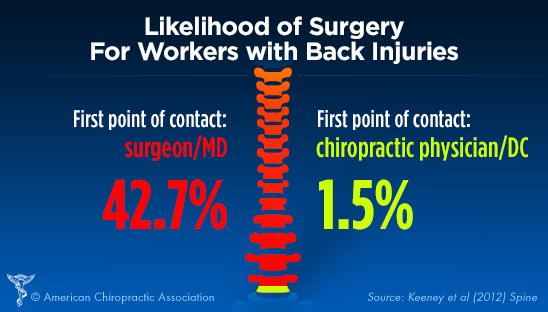The Mechanics And Impacts Of Cold Laser Treatment: Introducing The Scientific Understanding
The Mechanics And Impacts Of Cold Laser Treatment: Introducing The Scientific Understanding
Blog Article
Article By-Harbo Bartlett
You may have come across cold laser therapy as an appealing therapy alternative for numerous problems, yet have you ever before wondered how it actually deals with a cellular degree? Understanding the mechanisms behind this treatment can shed light on its performance in promoting recovery and reducing swelling. By checking out the scientific research behind cold laser treatment, you'll gain insights right into the remarkable ways in which light can affect mobile processes and facilitate cells repair work.
Exactly How Cold Laser Therapy Works
To understand exactly how cold laser treatment functions, you require to comprehend the fundamental principles of just how light power engages with organic tissues. Cold laser therapy, additionally referred to as low-level laser treatment (LLLT), utilizes specific wavelengths of light to penetrate the skin and target underlying tissues. Unlike the extreme lasers utilized in operations, cold lasers release reduced levels of light that don't generate warm or trigger damage to the cells.
When look at here get to the cells, they're absorbed by elements called chromophores, such as cytochrome c oxidase in mitochondria. This absorption sets off a collection of biological reactions, including raised mobile power production and the launch of nitric oxide, which boosts blood flow and minimizes swelling.
In addition, the light energy can also stimulate the production of adenosine triphosphate (ATP), the energy money of cells, assisting in cellular fixing and regrowth procedures.
In https://upper-cervical-chiropract27395.blogthisbiz.com/36474664/eager-to-find-out-how-cold-laser-therapy-is-changing-the-landscape-of-detoxification-discover-the-clinical-structure-of-this-sophisticated-strategy-to-removing-toxins-and-enhancing-cellular-health-and-wellness , cold laser treatment harnesses the power of light power to promote healing and relieve pain in a non-invasive and gentle way.
Systems of Activity
How does cold laser therapy in fact function to produce its therapeutic results on biological cells?
Cold laser therapy, also known as low-level laser therapy (LLLT), operates via a process called photobiomodulation. When the cold laser is related to the skin, the light power passes through the cells and is soaked up by chromophores within the cells.
These chromophores, such as cytochrome c oxidase in the mitochondria, are after that boosted by the light energy, bring about a cascade of biological responses. One crucial mechanism of action is the enhancement of cellular metabolism.
The soaked up light power enhances ATP production in the mitochondria, which is essential for mobile feature and repair service. Furthermore, cold laser treatment aids to lower swelling by inhibiting inflammatory conciliators and promoting the release of anti-inflammatory cytokines.
This anti-inflammatory effect adds to pain relief and cells recovery.
Healing Impacts
Recognizing the therapeutic results of cold laser treatment includes recognizing exactly how the improved mobile metabolism and anti-inflammatory buildings add to its favorable results on biological tissues.
When the cold laser is related to the damaged area, it boosts the mitochondria within the cells, resulting in increased production of adenosine triphosphate (ATP), which is crucial for cellular function and repair service. This boost in mobile power speeds up the recovery process by promoting cells regeneration and lowering swelling.
Additionally, the anti-inflammatory residential properties of cold laser treatment help to lower discomfort and swelling in the targeted area. By inhibiting inflammatory moderators and advertising the release of anti-inflammatory cytokines, cold laser therapy help in minimizing discomfort and boosting the overall recovery response.
This reduction in inflammation not only offers instant alleviation yet also supports lasting tissue repair.
Conclusion
In conclusion, cold laser treatment works by promoting cellular fixing and cells regeneration with photobiomodulation. Its anti-inflammatory homes offer discomfort alleviation and minimize swelling by preventing inflammatory mediators.
This therapy supplies a detailed technique to recovery, delivering both prompt alleviation and long-term cells repair work advantages.
With its mechanisms of activity, cold laser therapy proves to be a reliable and promising therapy choice for a range of problems.
